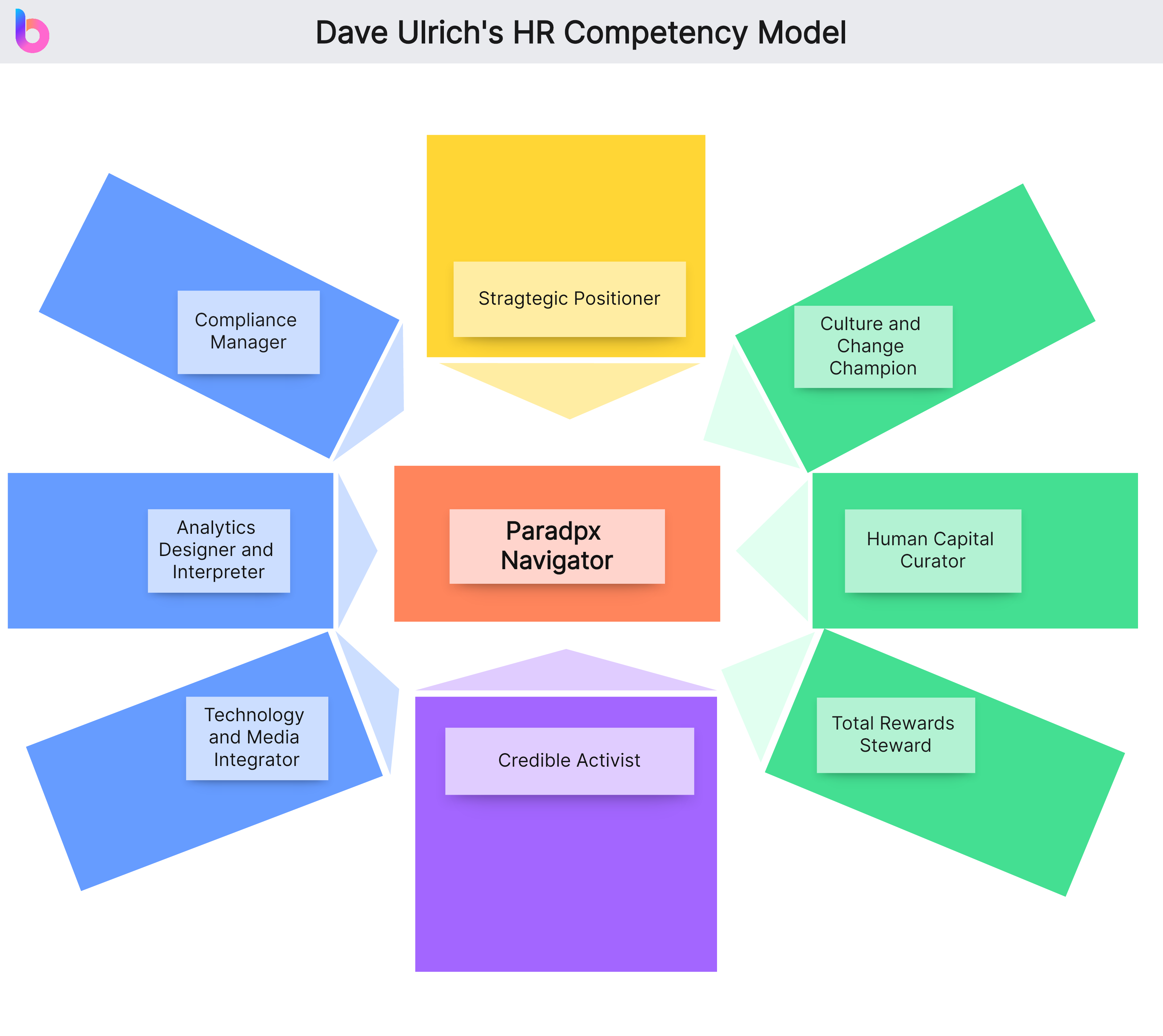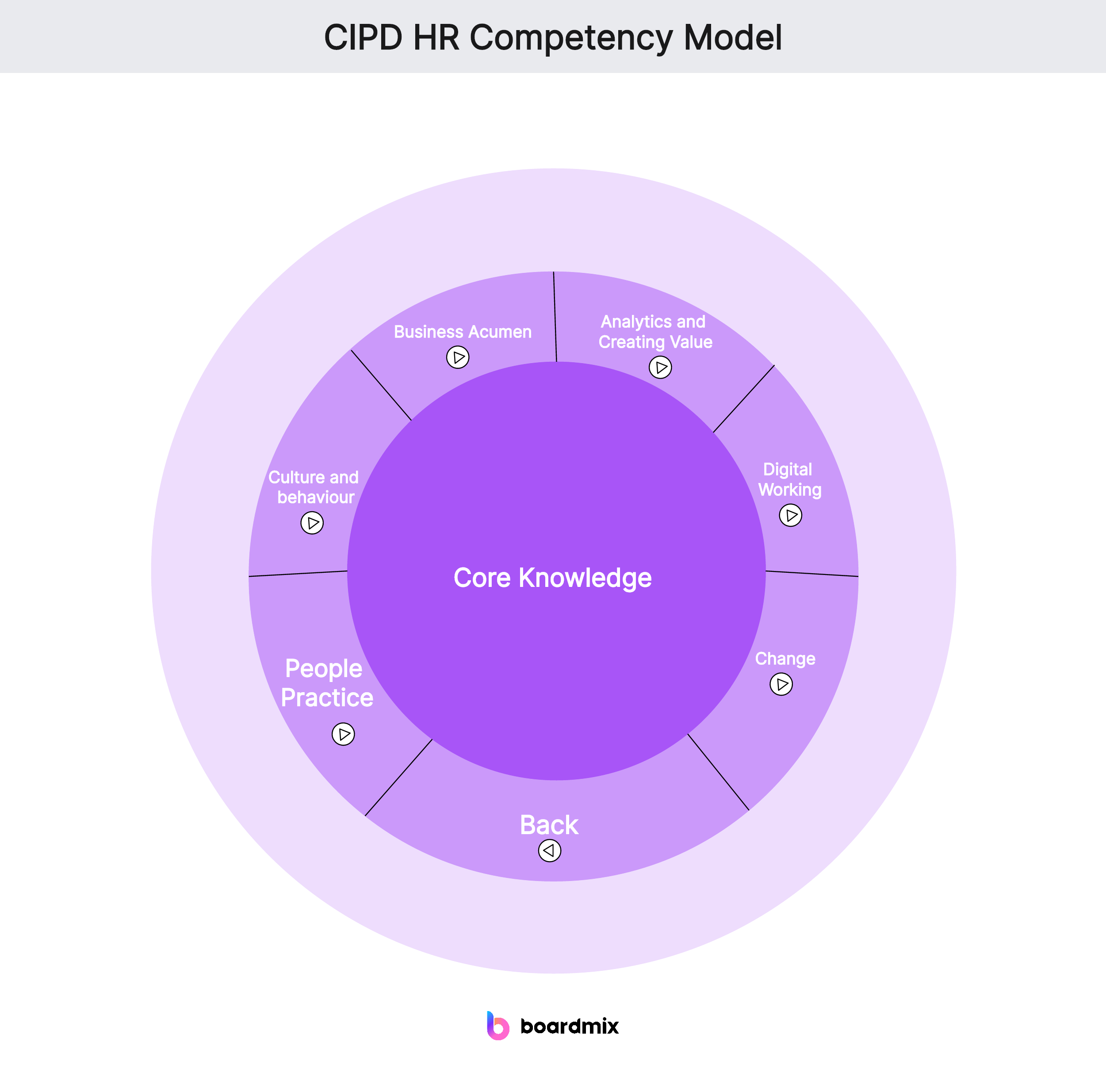What is the HR Competency Model?
An HR Competency Model is a framework that outlines the key knowledge, skills, and behaviors that HR professionals need to possess to be successful in their roles. It provides a clear definition of the core competencies that are required for HR professionals to effectively support the organization's HR functions and strategies.
The HR Competency Model typically includes a range of competencies, such as strategic thinking, communication, problem-solving, and employee relations. These competencies are based on the specific needs of the organization and may vary depending on the size, industry, and culture of the company.
By using an HR Competency Model, organizations can assess the current capabilities of their HR team, identify skill gaps, and develop targeted training and development programs to enhance the skills and knowledge of their HR professionals. This helps to ensure that the HR team is equipped with the necessary competencies to drive organizational success and effectively contribute to business objectives.
What are the 4 Types of HR Competency Model?
The human resources competency model is a tool that describes the skills, knowledge, and behaviors required by human resources professionals to successfully perform their jobs. Here are four common types of human resources competency models.
1. Generic Competency Model
The generic competency model applies to all human resources professionals, regardless of their level or role in the organization. These models typically include basic competencies such as leadership, decision-making, communication, and project management.
2. Role-Specific Competency Model
The role-specific competency model focuses on the special skills and knowledge required for specific human resource positions or roles. For example, recruitment managers need skills different from those of compensation and benefits experts.
3. Level-Specific Competency Model
The level-specific competency model focuses on the skills and knowledge needed by human resources professionals at different levels. For example, the abilities required by senior leaders will be different from those of junior or mid-level human resources professionals.
4. Industry-Specific Competency Model
The industry-specific competency model targets human resource work in a specific industry. These models recognize that human resource professionals in different industries may need different skills and knowledge.
These four types of models provide a comprehensive approach to identifying and developing the capabilities of human resource professionals. They can be used independently or in combination to meet the specific needs of an organization.
HR Competency Model Examples
Here are five examples of human resources competency models that can help you understand and build a competency model suitable for your organization.
Dave Ulrich's HR Competency Model
This model emphasizes the four main roles of human resources professionals in an organization: strategic partner, change agent, employee champion, and administrative expert.

Society for Human Resource Management (SHRM) Competency Model
SHRM's model divides human resource competencies into two major categories: technical competencies (such as human resource expertise) and behavioral competencies (such as leadership, business understanding, communication, and relationship management).

Chartered Institute of Personnel and Development (CIPD) HR Competency Model
CIPD's model includes ten main competency areas, including strategic insight, leadership, decision-making, relationship influence, etc.

Canadian Government's HR Competency Model
The Canadian government's model contains five key areas: knowledge, abilities, personal suite, certification and qualifications, and experience. The model emphasizes the characteristics of public sector human resource management.
Amazon's HR Competency Model
Amazon's model focuses on four key capabilities: business acumen, data-driven decision-making, innovation and implementation, and talent to motivate employees.
These models provide different perspectives and methods to understand and define the core competencies of human resources professionals. Choosing or creating a model suitable for your organization is key because it will guide how you hire, develop, and evaluate your HR team.
Benefits of Using the HR Competency Model
The HR competency model is a powerful and practical tool that can drive all aspects of the talent management process and help organizations achieve their strategic goals. Undoubtedly, using a human resources competency model brings many benefits to the organization.
More Effective Recruitment and Selection
By clearly defining the skills and knowledge needed for success in specific roles, competency models can help recruitment teams more accurately identify the most likely successful candidates.
Improved Employee Development and Learning
Competency models provide a clear development path, helping employees understand what skills and knowledge they need to improve to achieve their career goals.
Enhanced Performance Management Effectiveness
Competency models provide a clear framework for performance management, allowing managers and employees to better understand expectations for more targeted feedback and improvement.
Supports Business Strategy
Human resources competency models can ensure that the skills and knowledge of the HR team are closely connected with the organization's business strategy, thereby helping to drive business results.
Promotes Organizational Culture and Values
By explicitly including behaviors related to organizational culture and values in the competency model, organizations can better shape and strengthen their culture, ensuring all employees know how to embody these values in their daily work.
How to Develop An HR Competency Model
Developing an effective HR competency model is a task that involves multiple steps. Here is a possible process:
1. Define Objectives
First, you need to clarify what you want to achieve by establishing a competency model. Possible goals include improving the overall capabilities of the HR team, better-assessing employee performance, or providing personal development plans.
2. Collect Data
This step requires collecting various data about your organization, industry, market, and current and potential HR challenges. This may include employee surveys, focus group discussions, industry research, etc.
3. Identify Key Competencies
Analyze the collected data to determine the key skills, knowledge, and behaviors required to successfully perform HR roles in your organization. This may include business sensitivity, HR expertise and practice, relationship management, strategic contribution, and analytical thinking.
4. Create Model
Now you can start creating your competency model. It should be an intuitive chart or framework that lists each competency and how it is related to other competencies.
5. Get Feedback
Share your model within your team or larger organization and request feedback. Ensure it is usable in practical situations and can be understood and accepted.
6. Implement Model
Incorporate your model into daily HR processes including recruitment, training, performance management talent development, etc. Also, provide necessary support and resources to ensure everyone can understand and use the model.
7. Regular Review
Your competency model should be dynamic with regular updates to adapt to changing business environments and organizational needs. Every one or two years conduct a comprehensive review of the model and make necessary modifications based on feedback and results.
Overall, the development of human resources competency models is a systematic and comprehensive task requiring a deep understanding of your organization & employees as well as future HR requirements and challenges.








